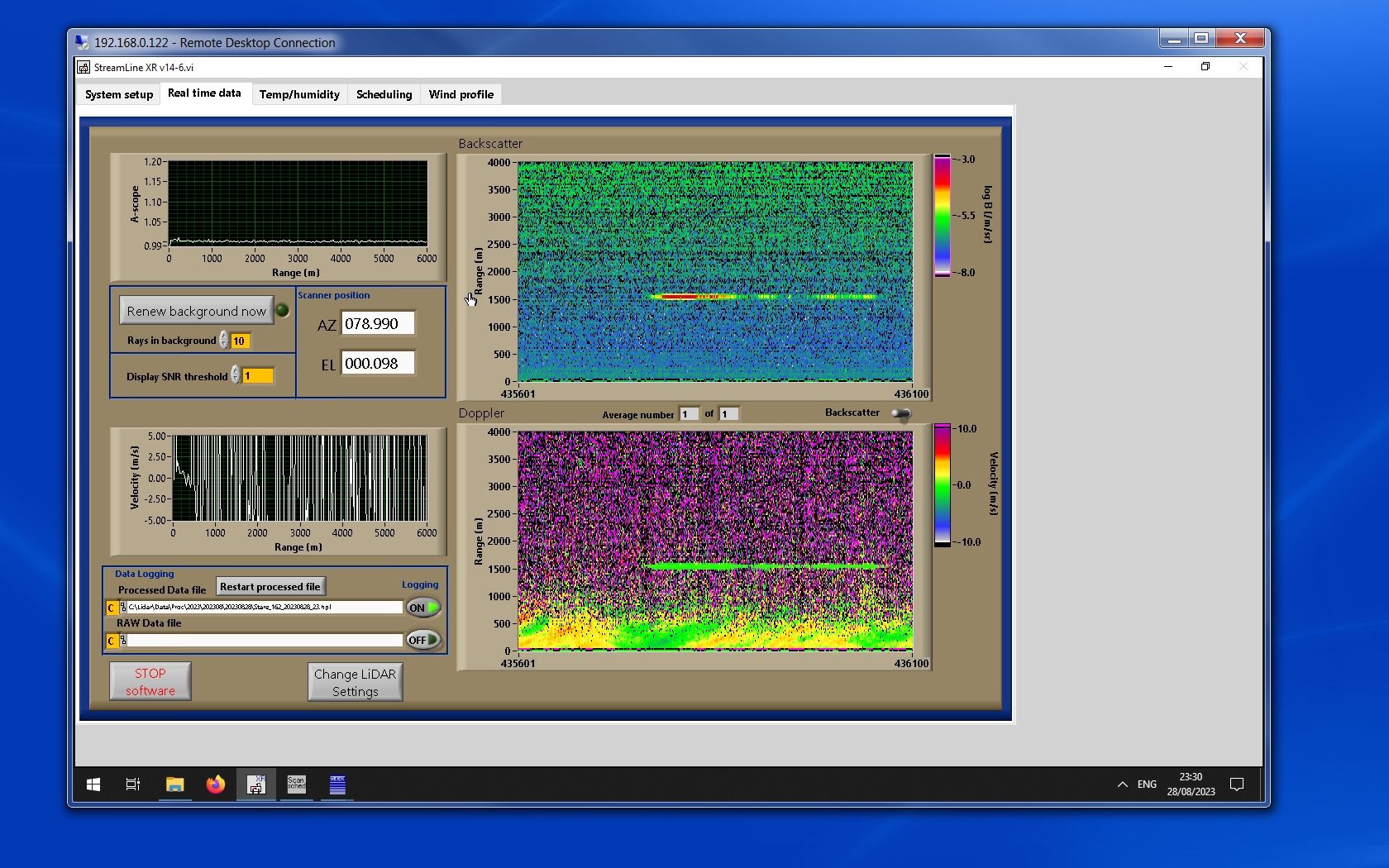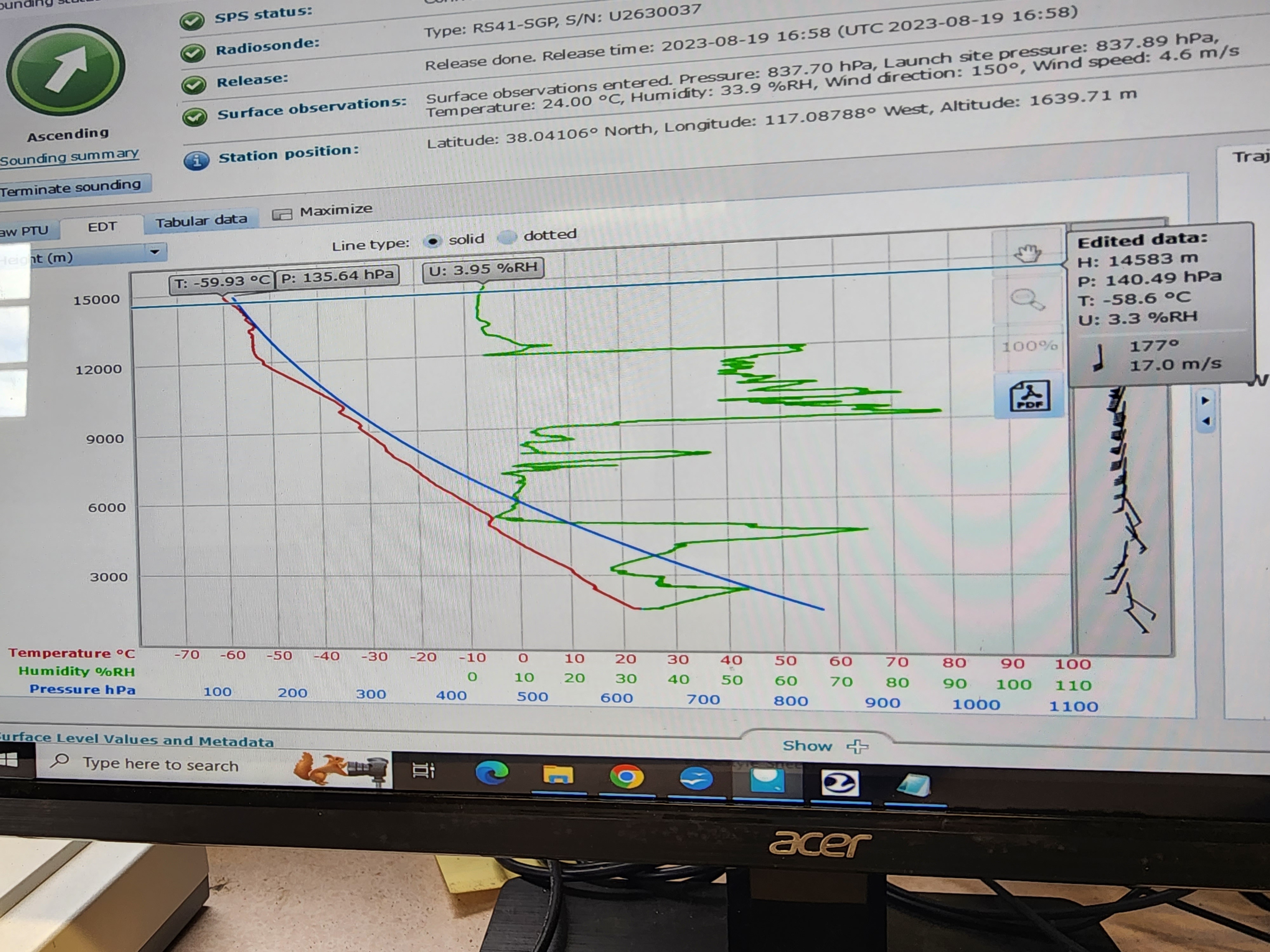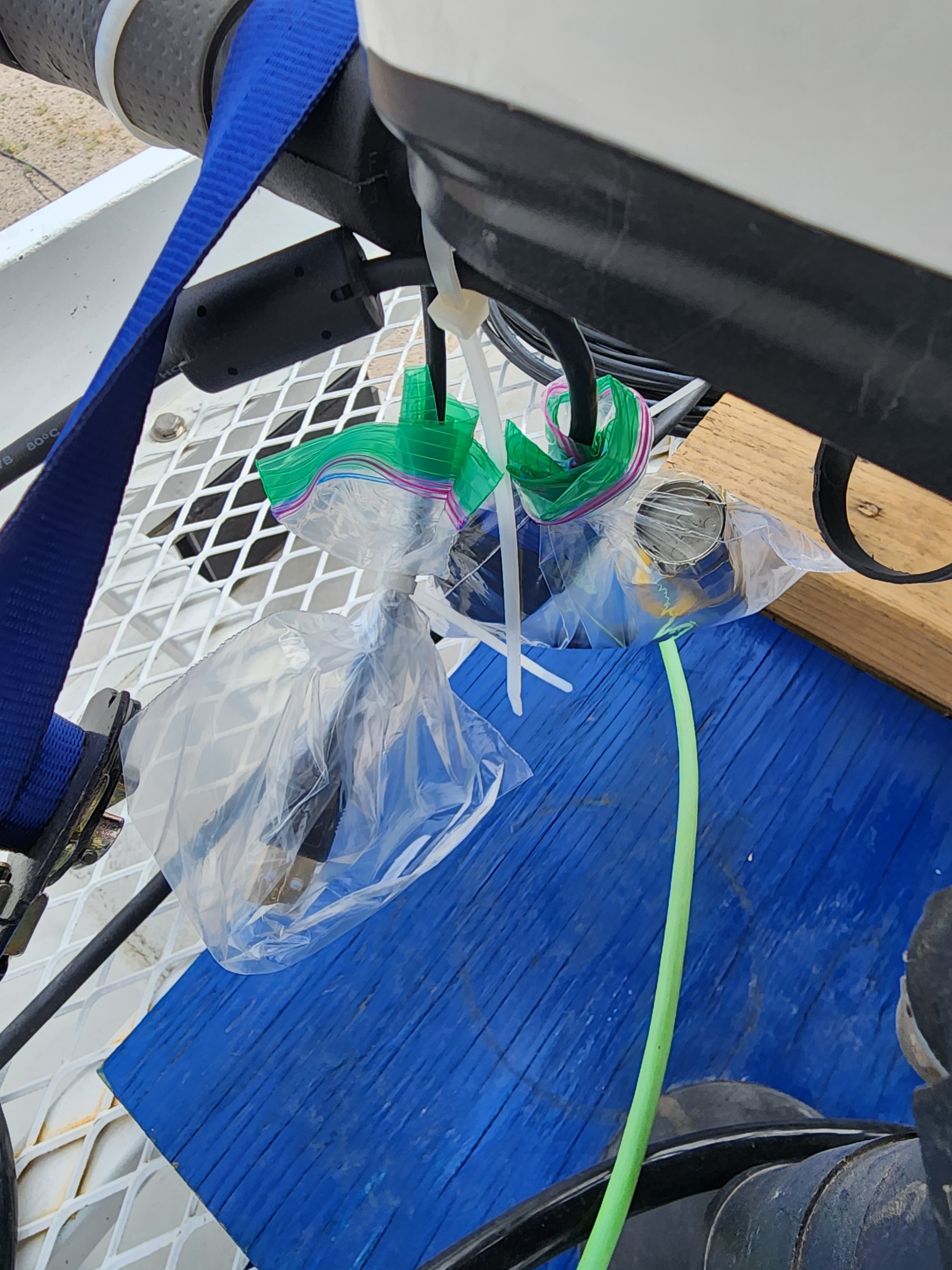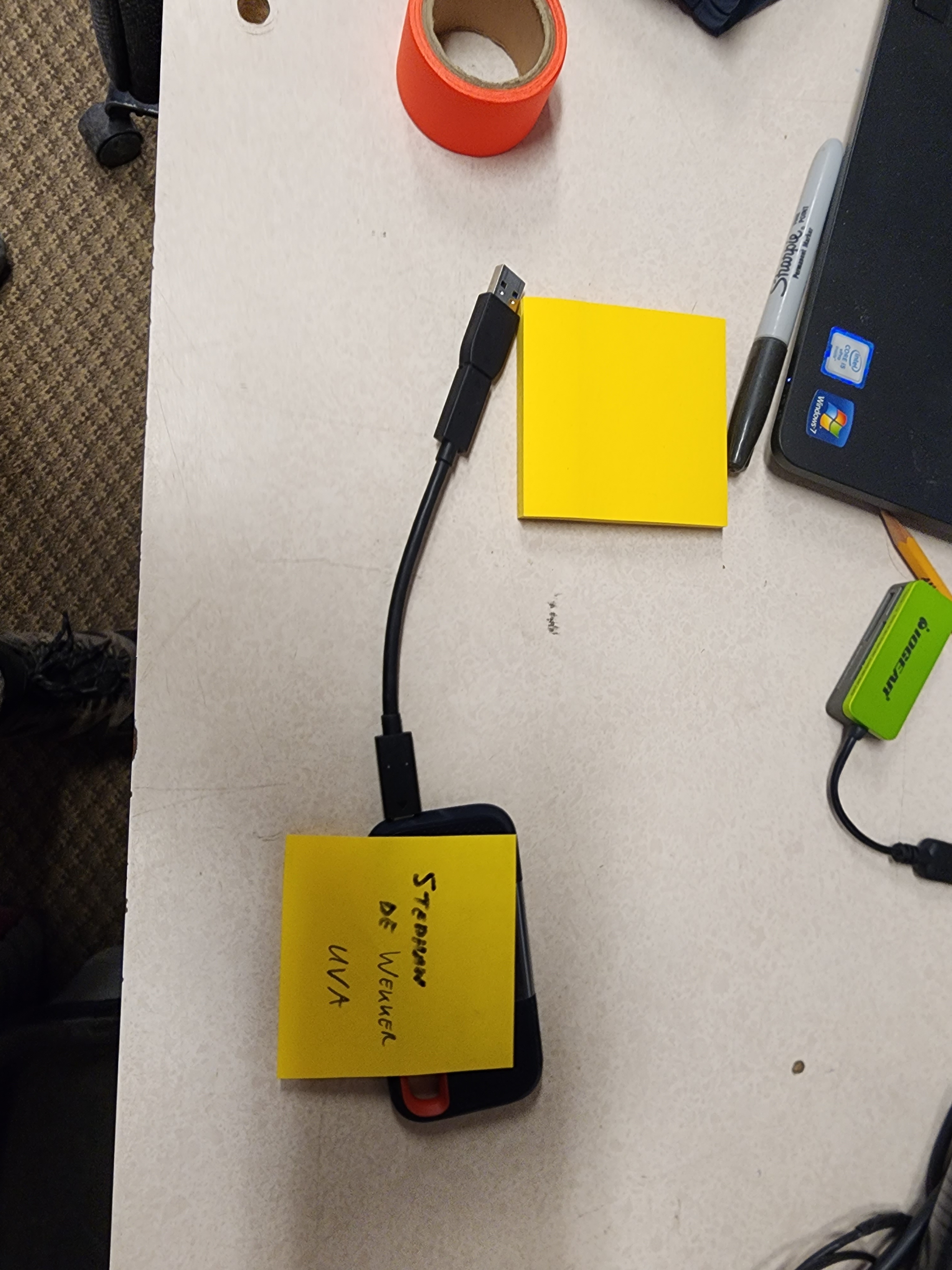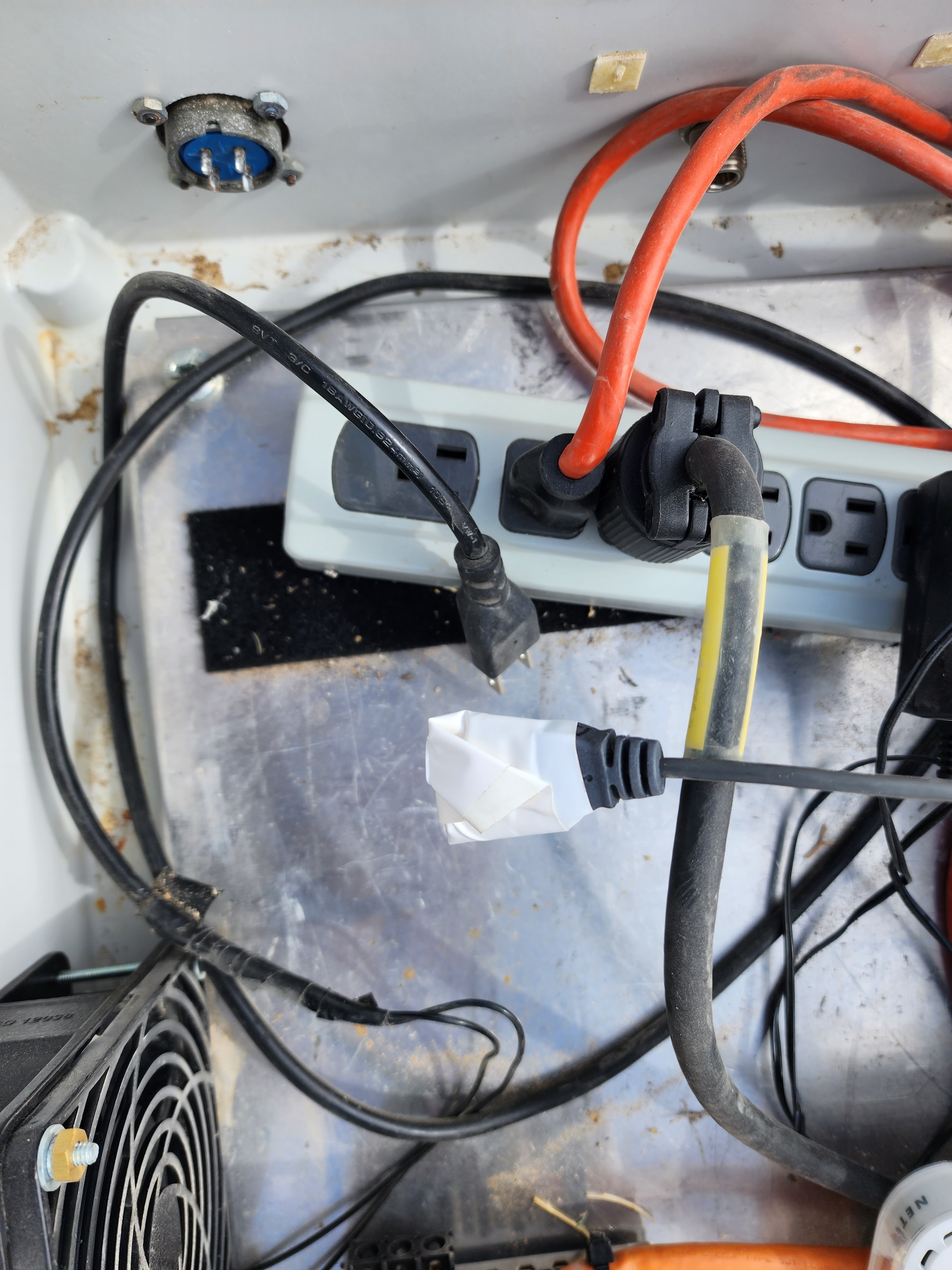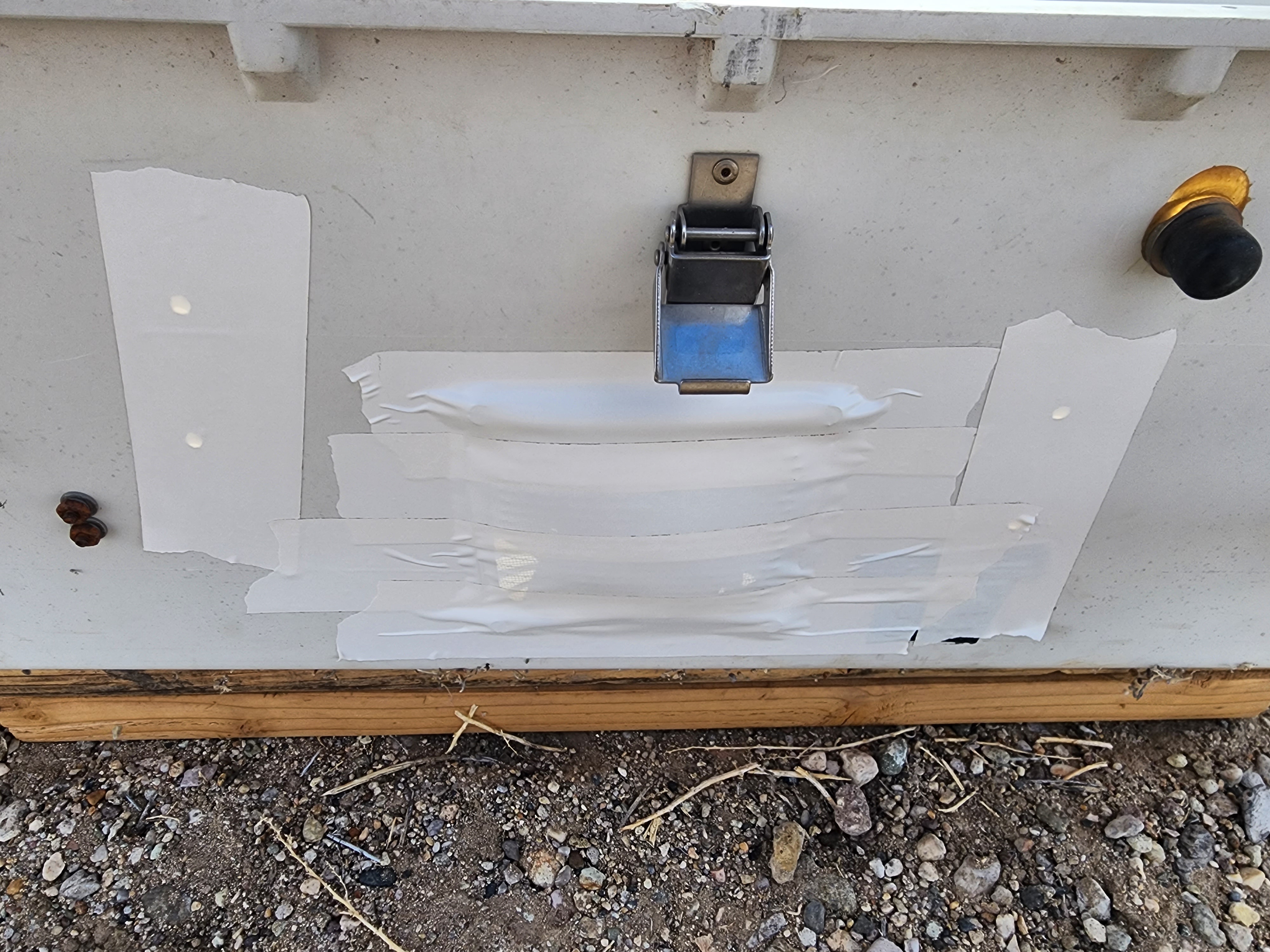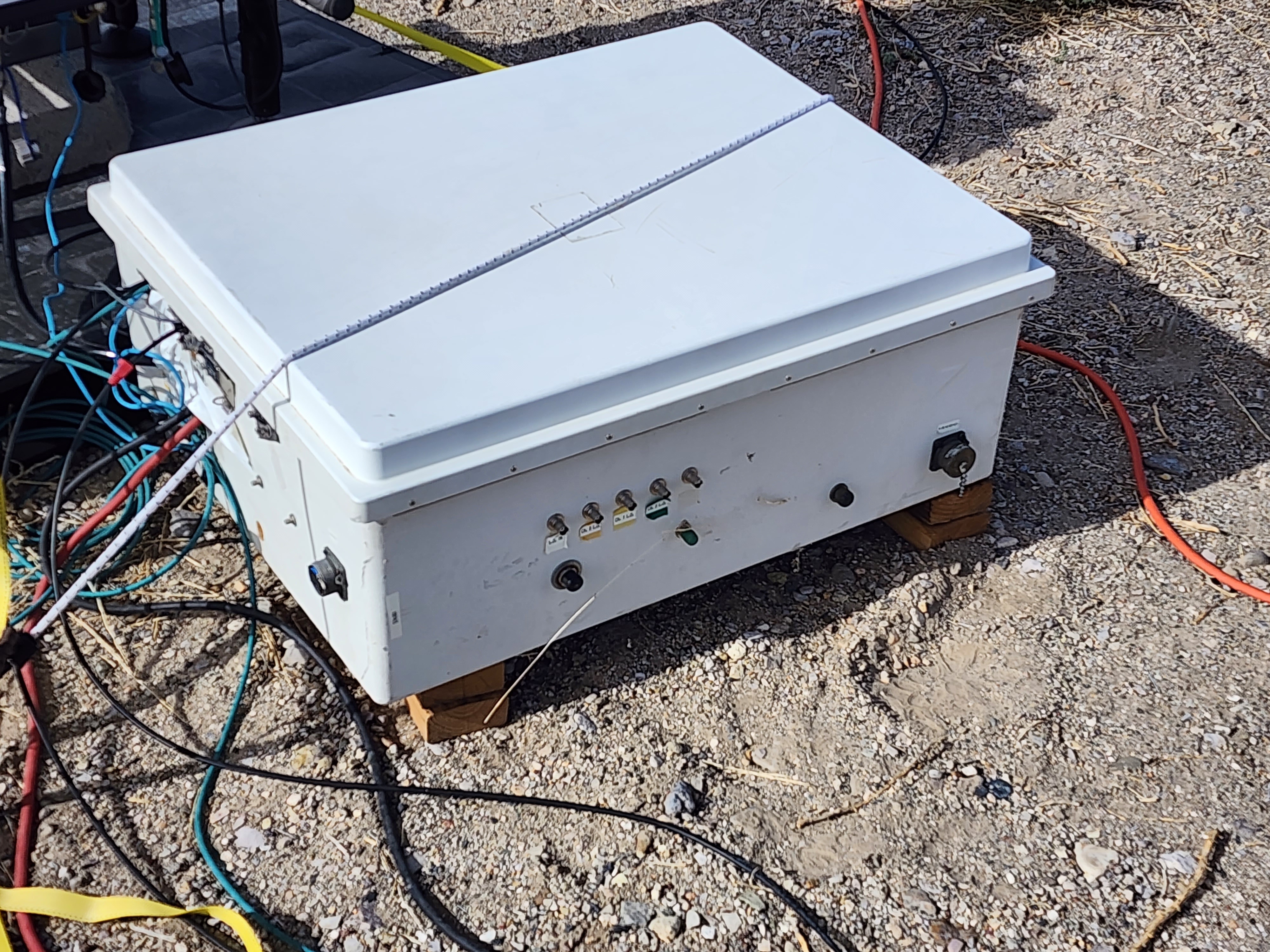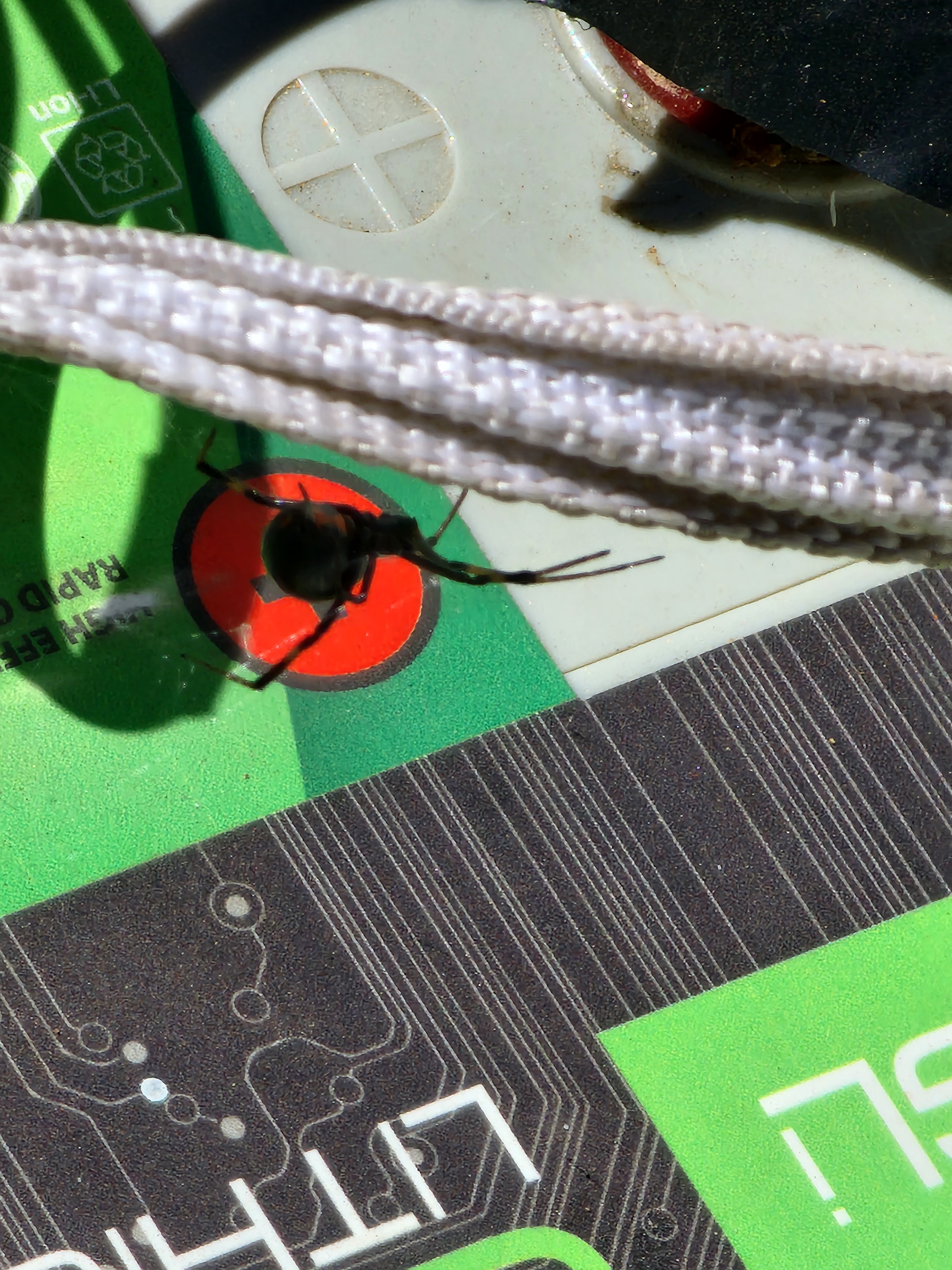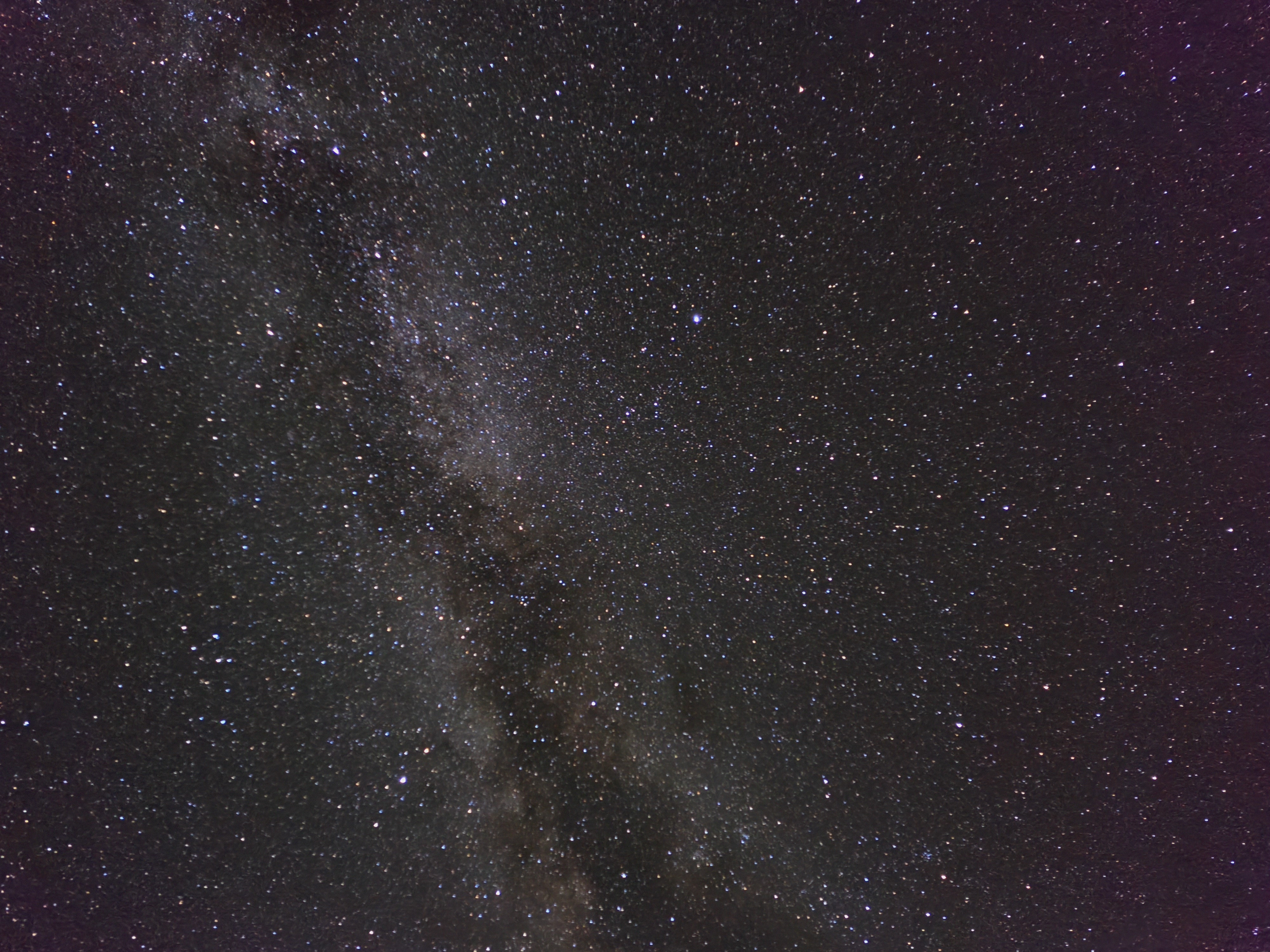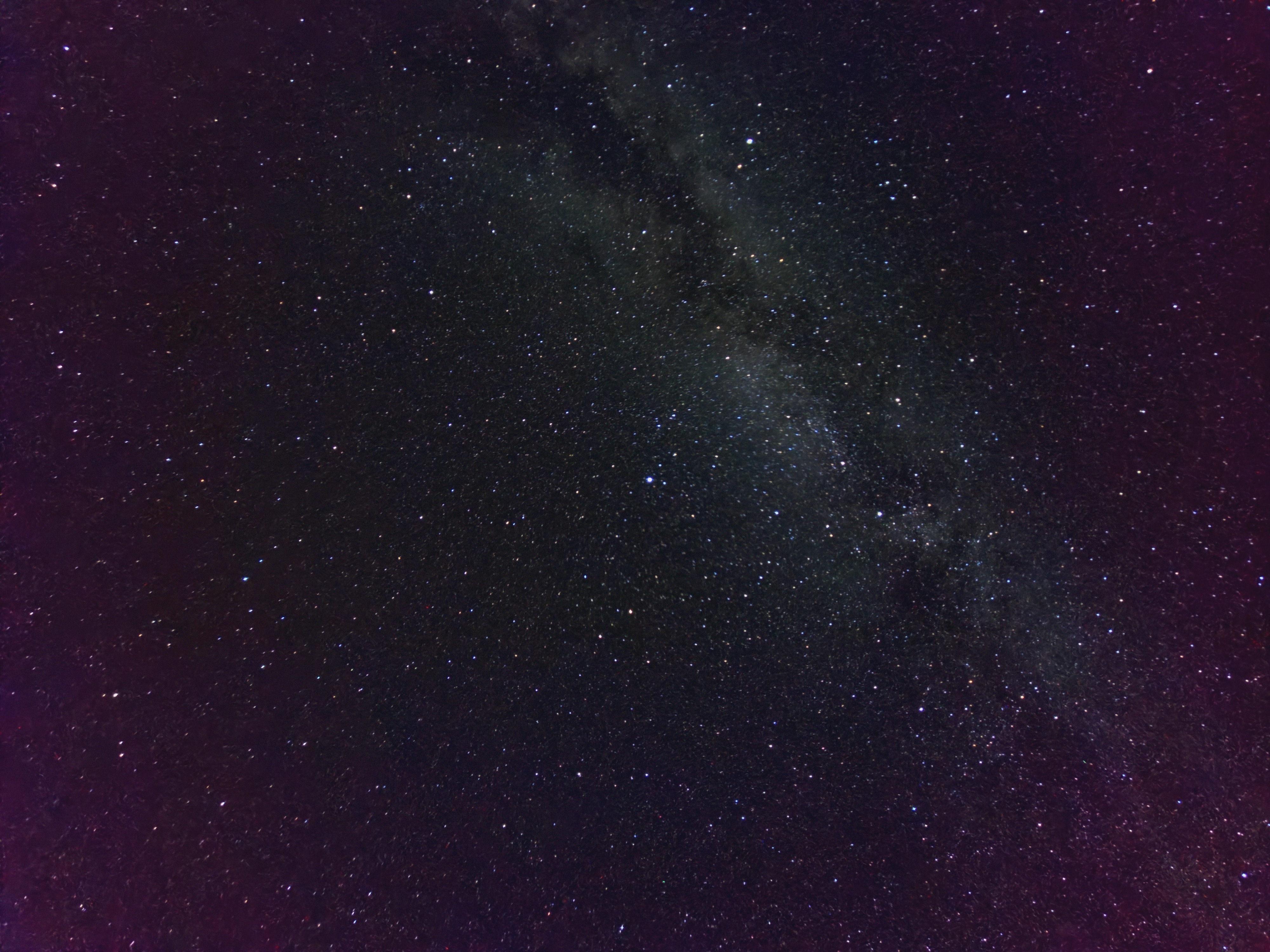Staff:
Josh, Isabel
Another clear warm day. No interesting weather occurred.
The lenses on the radiometer, METEK lidar, and UVA lidar were cleaned.
The current for both radars was checked around 11:00 AM:
- 449 current - 2.96 A
- 915 current - 2.45 A
Did a sounding this evening for Matt Hayman, who wants some nighttime data for intercomparison with the MPDs. Launched at about 9:40, easy conditions (calm, still warm, bright almost-full moon). Boy are there a lot of mice scurrying around outside here at night.
Just to make a note of it here. We went out yesterday to swap in a SD card, since Shane wanted to look at its data, and since we wanted to make sure it was working. Turns out it's been taking data but the time is completely wrong (Jan 2000), since apparently it's not getting time from the network. We went back out to replace the one that doesn't connect to the internet (numbered 2) with the one that does connect to the internet, but doesn't recognize its SD card (numbered 3). The new PurpleAir is collecting data, and it's getting to the PurpleAir map, so at least we'll be able to download it from there.
Of course, back at the base, the bad one is connecting to dsm wifi just fine...
We noticed today that the horizontally pointing halo lidar (the Metek one, on top of MISS) is intermittently seeing a hard target at about 1500m out, like in this plot:
We talked some with Shane about it, and with the range, it seems like it's most likely hitting the trailer tower.
Looking back through previous screenshots, we've seen this happen at least as far back as 8/25. The bright line doesn't show up very well on the thumbnailed images, so it's possible it's been going on longer, we just haven't found an example of it yet.
Since the trailer tower is offset to the north of the array, does this mean the lidar isn't lined up with the array? Or is the beam wide enough we could be seeing it even if it's pointed at the array?
Some of last weeks launches and the morning launch on Sunday, Isabel and I noticed that the weather balloons looked to be getting a little bigger in size. They gradually grew in size and got bigger with time. Not every balloon was getting too big during this time period. The regulator and flowmeter were inspected to make sure everything was working correctly. We were filling the balloons slower and slower and sometimes still getting a large balloon size. The launch on Saturday evening and Sunday morning we noticed the balloon getting much bigger then normal.
The regulator seems to be working fine and so does the flowmeter (from watching the gauges) but we believe that even though the gauges on the flowmeter are showing the correct amount of helium going into the balloon, this is not the case. We changed to the other flowmeter and regulator and have had normal size balloons so far.
Below is a picture of the last launch we did with the bad flowmeter on Sunday morning. Tests were being done each launch to try and figure out what the problem could be.
Another bright and sunny day with light winds.
Launches are going well and instruments are looking good.
Current readings for the 449 and 915 radars:
- 449 current - 2.95A
- 915 current - 2.43A
On site with Isabel. Sunny skies and light winds.
The balloon launches went well after using a different sonde when the first sonde wouldn't connect. All of the instruments are running smoothly.
I looked at the 449 and 915 currents around noon.
- 449 current - 2.94A
- 915 current - 2.46A
All good, Josh and I onsite with Reva.
The first sonde we tried for the 10am launch had GPS problems after finishing ground check and taking the sonde outside. It would show that it was seeing 4 satellites for just a second or two, then back down to zero for minutes at a time. We tried a second sonde, which was fine.
For the 3pm sonde we tried the bad one from earlier again, this time no problems with the GPS.
In anticipation of the oncoming weekend storm due to Hurricane Hilary soon hitting southern California, we spent the morning securing possible flood-susceptible access points within our equipment. The morning began with open skies and hot sun but quickly became cloud covered and has begun to cool down rapidly with the approaching storm. The rather chaotic Sounding is shown below:
As I will potentially be departing Tonopah before the rain ends, I've compiled a brief list of things that I have done to secure certain items that will need to be undone by whoever comes to replace me out here:
- First we added some tape around the plugs of the 449 amplifier and silver boxes, this probably won't need removal until teardown as it is just some extra protection on cables that are already protected.
- Secondly for the Metek Lidar atop the MISS trailer we unplugged the USB and VGA Cables before wrapping and zip-tie-ing them in plastic bags to protect from the rain. The ports they plug into were also capped with the included screw-on covers. Flood mitigation was not necessary as if water levels reach this height then the entirety of M2HATS will have most likely been swept down valley. Picture below:
- Thirdly, for Stephan's Lidar box we added 2x4s beneath it to raise it up, removed the data drive and placed it within the ISS1 trailer by the lidar laptop, sealed the fan/vent holes with tape, unplugged the fan as temperatures are rapidly cooling, and sealed the empty USB cable just in case. This is all most likely overkill but we wanted to be slightly cautious with potential flooding. Pictures below:
- Finally, unrelated to the storm but included as it is very important, Black Widows have been found enjoying the ISFS coolers and the shade they provide. Please be wary of opening any box with your bare hands as it would not be fun having to drive to the hospital for a bug bite. Picture of the rather large fella below:
Other than the potential storm and the clouds it has now brought it, the days have been astonishingly clear, I've included a star photo taken from my phone out at the site. While being in the desert alone is rather spooky, the galactic sights make up for it.
A warm day with temps hitting 90F, scattered clouds, southerly turning easterly. Occasional dust devils, including one that reportedly went through the UAS operation at the west end of the ISFS array.
Mainly worked on wind profiler power measurements and tweaks to the Metek lidar. Sam made power measurements of both wind profilers, see his separate blog entry for details. The bottom line is the 449 MHz Modular Profiler power was lower than expected, however it wasn't a direct measurement but depended on a test patch antenna which may not be coupling well to the main antenna. This was done so as to minimally disturb the profiler because the rigid cables on the profiler can be tricky to connect and disconnect. Since the profiler is working well (winds to around 4km and RASS to nearly 2km), we aren't concerned about the performance. The 915 MHz profiler check was with a direct measurement and reported the power expected.
The Metek Halo lidar has had some puzzling behavior so I investigated further today. I set up some sector scans across the tall tower. There were echoes around the expected location but were broader than expected being nearly one degree wide (around 77.0 - 77.8 deg azi and 1.5 km range, whereas the windcube response was about 0.1 degree). Also when staring along the ISFS array, the clearest returns are pointed at 79 deg, 0.1 elevation. Pointing at 80 deg and 0 elevation as planned produces regular artifacts. It appears that the azimuth is accurate to about 0.3 deg and the level (elevation) to around 0.1 or 0.2 deg, however there is a little wobble in the trailer with the wind (around 0.1 deg) and a little wobble or hysteresis in the head position. In addition it appears there is some diffusion or sidelobes in the beam. The focal point is about 500 meters (as set by Halo Photonics) and the beam appears to diverge at longer ranges (hence the spread when scanning the tower). When pointing close to the REAL trailer, some of the beam may be skimming or diffracting along the trailer and then hitting the ground further out and thus producing artifacts. For this reason, I've set the stare a little to the north and upwards (79 deg azi and 0.1 elevation). The beam appears to be spread around 0.2 deg or more at the range of the array (1.5 km) which corresponds to about 5 meters. I set up hourly narrow PPI sector scans across the tower and narrow RHIs at 79 deg to keep tabs on these effects, and perhaps enable some analysis of the issue later.
Late afternoon the 449 MHz profiler was drawing 2.96 A and the 915 MHz profiler was drawing 2.47 A.
Power measurements on the 915 MHz profiler (left) and with a test patch on the 449 MHz profiler (right).
Visit to the OU UAS operation near the ISFS array.
Bill and David noticed that the current draw on the 449[MHz] wind profiler was lower than usual despite receiving good data values on the science side of things. This prompted testing the power output of several of the antenna sections via a power meter and antenna patch with ample attenuation in-between. After learning the correct methods to place and align the patch antenna in order to conform with the radar's polarity, all three main antennas had 2 of their 18 sections tested. 4 sections read approximately 33.75[dBm] or 2.37[watts], while 2 sections read approximately 15[dBm] or 1[watt]. These are rather far off from the expected 49.19[dBm] or 83[watts] that each section should theoretically be blasting into space. (1.5[kw] total divided by 18 sections = 83.33[watts] per section = 49.19[dBm] per section). This all seems to indicate a severe drop in power, but with how good the data appears, this doesn't seem very likely. Potentially an issue with the test setup coupling between antenna and patch antenna as different cables, attenuators, and couplers were tested as well. Since the data is the goal, we decided to wait until a more opportune time to test these issues and have left the 449 alone for the time being. Similarly, we measured the amplifier output of the 915[MHz] profiler. Currently it appears to be running fantastic, outputting 56[dBm] or 400[watts] as expected.
Most importantly, the bagels provided by the Best Western hotel are of decent quality. Issues arose however, as they had diminished their cream-cheese resources by the time I had acquired one. This then required an impromptu field-repair in which peanut butter and jelly were utilized to salvage the breakfast sandwich into an improvised lunch device. Thankfully, this was a great success. Further testing may be required before data validation.
Photo: Tonopah local interested in weather science.
A little warmer day, mostly sunny during the morning followed by increasing clouds. Mostly southerly winds with a few dust devils around, later with a few isolated and small rain showers in the distance.
Today started off with good conditions for the campaign, although during the afternoon the increasing clouds were less favorable. After some checks on the systems, Sam accompanied Jacquie on some soil sampling for ISFS, then worked on the ISS1 PurpleAir aerosol sensor (one of the laser sensors had reduced power so PurpleAir sent a replacement). The sensor was reinstalled and restarted around 18 UTC, and seems to be working fine. We checked on the second PurpleAir, out on the ISFS tower array, which has connectivity issues. I've sent an email to the vendor with some diagnostic info and suspect there may be a network port issue since we are connecting to that one via a DSM Wifi.
I did some work on data backups and then on the lidars. Shane and I looked at some comparisons between the Halo lidars and the REAL lidar. There is some correlation, particularly between the Metek Halo (staring out towards the ISFS tower array) and the REAL. For example in the photo below. there are bursts of backscatter in the REAL images drifting towards the northeast, corresponding to plumes in the Halo images Doppler shifted away from the lidars.
The Metek Halo range is a little limited, today reaching only around 1 to 1.5 km (staring out to the ISFS array). Briefly interrupted sampling for some checks around 23:45 UTC. From around 0100 UTC (Aug 15) the averaging time was increased from one second to two seconds, and that does seem to help (eg, lidar.ISS1_halo.202308150120.screenshot_metek.jpg - the change is about halfway along the plot). The range appeared to increase from around 1500m to almost 2km. It does mean that the time axes now cover around 35 minutes instead of the previous 17 minutes. Note that the averaging is unchanged on the vertically pointing UVA Halo lidar, and those plots cover around 10 minutes.
The wind profilers continue to perform well. This afternoon the 449 MHz profiler was drawing around 2.94A in winds mode and 4.91 A in RASS mode, while the 915 MHz profiler was drawing around 2.44 A.
Example of plumes of backscatter seen in both REAL lidar images (left) and the Metek HALO lidar (right).
Repairing and reinstalling the PurpleAir aerosol sensor on the ISS1 tower
Warm day with mostly light variable winds, turning south-easterly during the afternoon. Mostly cloudy this morning, clearing during the afternoon.
Sam and I arrived last night and we spent most of the day going over equipment around the site. Most things are working well, although there are a couple of display issues. The DM computer monitor in MISS doesn't seem to be connecting to the computer. The computer itself appears to be working fine, but there appears to be a problem with the display port connection to the monitor, or perhaps it's the graphics card. The monitor does work when connected to another computer. Since the computer itself is working normally and since we don't need to work on that monitor, we decided to leave it alone.
Another display issue was with the laptop monitoring the two Halo lidars. It appeared frozen this morning when Mack tried to connect. He restarted the laptop (around 17Z) and then was able to connect normally and reconnect to the two lidars, however the Autoscreen capture package is not doing the 10 minute screenshots that it normally does. Therefore there's a gap in the Halo lidar plots for several hours until I got it working again this evening.
The OU UAS operation started today, and performed vertical profiles with a quadcopter drone about 100 meters east of the main site every 30 minutes. They found, however, that after going up 50 - 100 meters, the radio link to the drone was cut and it would automatically come down. It turns out that the link is in the 900 MHz band and it appears that the MISS profiler is interfering with it. (We turned off both profilers around 20 UTC for around 10 minutes to confirm this). They moved their operation further east (to around 900 meters east of the main site) and found there that they can operate to around 900 meters AGL. We will experiment further tomorrow.
Since the weather conditions were cloudy this morning, and therefore not of interest to the campaign, and because he wants to conserve sondes for later in the project, Chenning decided to skip the usual 10am sounding today. We did launch at 3pm since conditions were better, with Sam learning how to launch his first sounding.
We cleaned the Windcube and Halo lidar windows, the ceilometer, the 4-component radiometer, and the two Micoseven cameras at the main site around 23 UTC. We also cleaned the wiper on the Windcube since that was also dirty. It appears that the Windcube wipes unevenly over the wipers since the head turns upward as it finishes its wipe routine and that may be contributing to the streak that Jacquie noted on the window. Jacquie also plotted up some comparison plots of VAD winds from the Windcube with soundings, so far they seem to agree well.
The 449 profiler amp was drawing 2.91A and the 915 MHz profiler around 2.40A late this afternoon.
Mack left to return home this morning (many thanks for your help Mack!).
Sam in action on his first day in the field for ISF: Wiring up a power supply for Chenning, cleaning a Halo lidar window, and launching a radiosonde.
Staff:
Mack and Jacquie
Weather:
Sunny and very little wind in the morning. Overcast and with easterly wind in the afternoon. Quite cool, I had to put a long sleeve on to sit outside in the evening!
Soundings:
Chenning and Shane launched the 10am balloon today. No known problems. The air was still enough you could see the balloon directly overhead for a very long time after launch.
Checklist:
- water level in lidar is good
- web plots
- real-time lidar displays
- 449 power: 2.92 A in the afternoon
Cleaning:
Nothing to clean today
Other Note:
The RF exposure meter battery was low, which meant a short mysterious beep every ~30 seconds in the ISS1 trailer. Took me a while to figure out where it was coming from!
Staff:
Mack and Jacquie
Weather:
Sunny and warm.
Soundings:
Students launched at 10am and 3pm local. No known problems.
Checklist:
- water level in lidar is good
- web plots
- real-time lidar displays
- 449 power: 2.91 A in the afternoon
Cleaning:
Nothing to clean today
